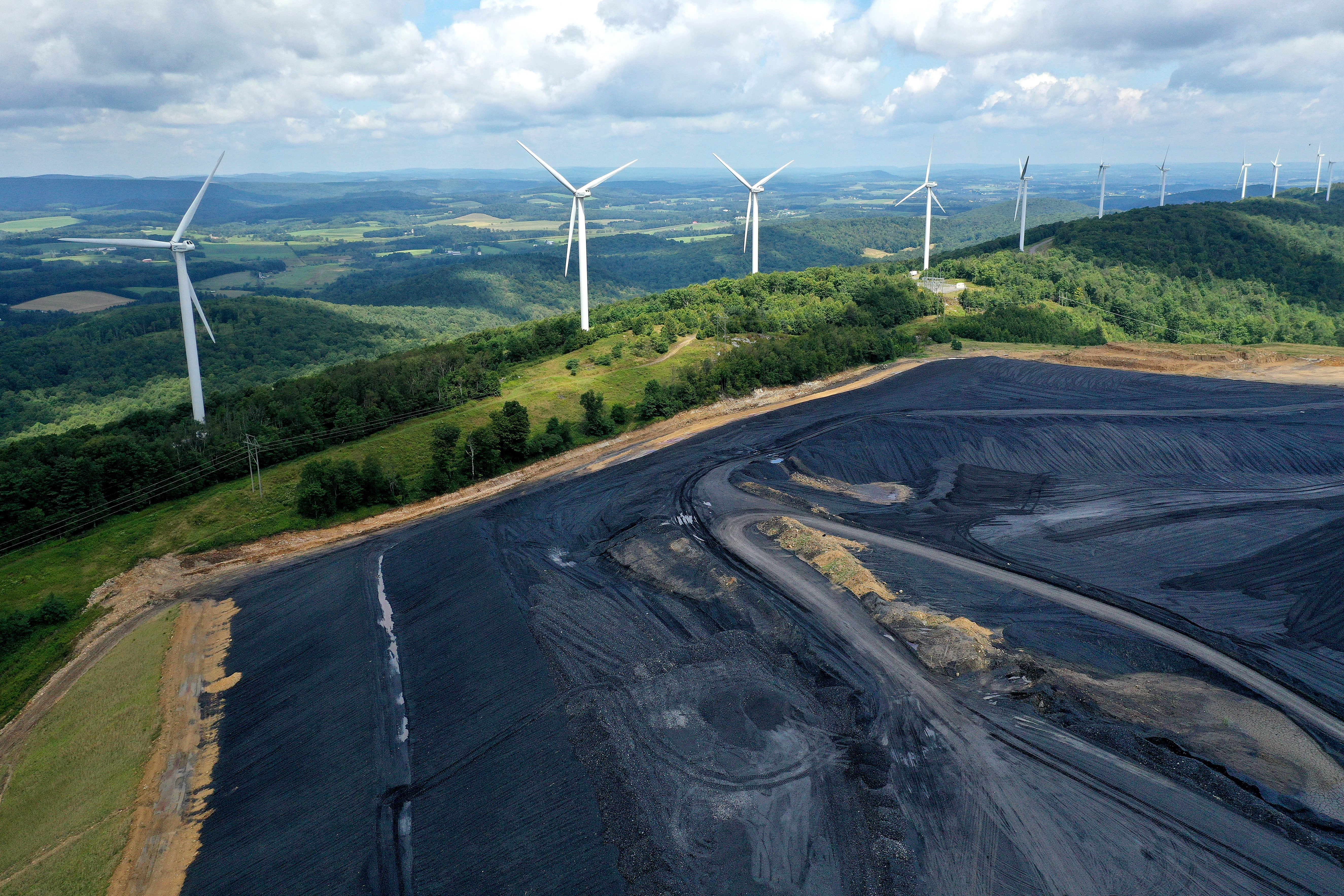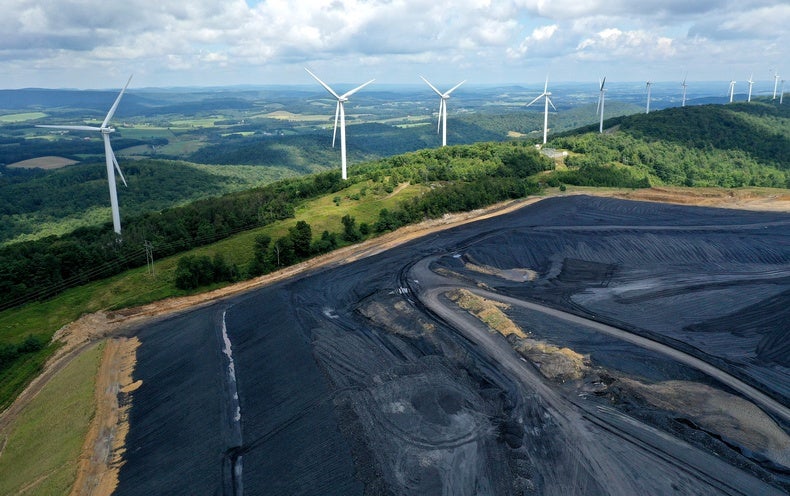
The world’s emissions have seesawed in recent years, plunging in 2020 amid pandemic-induced lockdowns only to rebound in 2021 and likely edge even higher in 2022.
Experts say 2023 could be the start of an emissions plateau, as the world’s largest emitters experience slow growth and invest more in renewable technology. But uncertainty reigns—especially on whether the world can begin the emissions dive necessary to avoid the worst impacts of climate change.
“I think we’re still in a world of pretty flat global emissions,” said Zeke Hausfather, a climate scientist who works at Stripe, a payment processing firm. “It is unlikely that we see deep global emission cuts over the next two years. Flattening was still better than what we were seeing in previous decades, but it is going to take time for the energy transition to pick up steam.”
Emissions likely increased in 2022. Carbon Monitor, an academic emissions tracker, estimates that emissions through October were 1.8 percent higher than 2021 levels. That’s far less than the 5 percent bump the Global Carbon Project forecast in 2021, as inflation and rising interest rates tamped down the economy’s recovery.
So what does 2023 hold? Below are four trends that will shape the world’s emissions trajectory in the years to come.
1. It’s the economy, stupid
Historically, the easiest way to predict emissions growth is to check the world’s economic outlook. A growing economy has historically meant more energy consumption and higher emissions. A recession usually spells the opposite.
Many prognosticators are cutting growth expectations in 2023. Kristalina Georgieva, head of the International Monetary Fund, recently said she expects slow economic growth in China, the U.S. and Europe, which rank as the world’s first, second and fourth largest emitters, respectively.
But just how slow, and whether the world slips into recession, remains to be seen.
Three major world economies face large uncertainties. Will the U.S. economy continue to shrug off rising interest rates in 2023? Will Europe be able to repeat its successes of 2022, when it phased out Russian gas shipments thanks to a combination of energy conservation, liquefied natural gas imports and warm weather?
Then there’s China. Global emissions growth was relatively muted in 2022, in part due to China’s “zero-Covid” policy and the damper it put on the Chinese economy. But the country recently rescinded that policy—a decision that will no doubt affect the 2023 outlook.
“We could see a large rise in global emissions if there is a making up for lost time with the Chinese economy,” Hausfather said. At the same time, he said, emissions growth could be muted if a wave of Covid cases throws China’s economy off kilter.
2. Green investment surge
One of the biggest developments in recent years has been the surge in clean energy spending.
The International Energy Agency estimates that such spending has risen 12 percent annually since 2020, up from 2 percent per year over the five previous years. In 2021, China led with clean energy investments of $380 billion, followed by the European Union at $260 billion and the U.S. at $215 billion. Oil, coal and gas investment, by contrast, has yet to return to pre-pandemic levels.
All that was before the U.S. weighed in with even more clean energy spending in 2022. The Inflation Reduction Act will provide $369 billion in clean energy tax credits over the next decade. Congress has also poured money into the sector through the bipartisan infrastructure bill and the CHIPS and Science Act.
In total, U.S. clean energy spending adds up to around $900 billion over the next 10 years, said Gernot Wagner, a climate economist at New York University. How that money is spent is one of the big trends to watch in 2023.
“The fact the U.S. has entered this clean energy race has provided a massive global jolt to the global economy,” he said.
Before that influx of funds, countries were already slowing down the rate of their emissions increase. The first decade of the 2000s saw emissions grow an average of 3 percent annually. That has slowed to 0.5 percent per year over the last decade, according to the Global Carbon Project. The decrease coincided with a fall in coal generation in the U.S. and Europe and suggests a greener world economy.
“The rich economies of the world have decoupled economic growth from CO2 emissions,” Wagner said.
Yet Wagner was quick to note that total emissions are still going up. China and India, which remain reliant on coal, continue to see their greenhouse gas output grow. And it’s not as if the U.S. and Europe have suddenly ditched fossil fuels.
A recent analysis of 2021 emissions by the Rhodium Group shows the economic rebound after pandemic lockdowns was particularly carbon intensive, with fossil fuel demand growing faster than gross domestic product in the U.S. and Europe.
“None of this is a success in the sense that emissions are going down, how cool,” Wagner said. “It means we are adding less and less to the atmosphere, but we’re still adding.”
3. Popularity of EVs and heat pumps
Climate advocates have long lamented a lack of progress in greening transportation and buildings. In that sense, 2022 brought welcome news. Electric heat pumps, which can replace oil or gas furnaces in buildings, were on pace for record sales, according to the International Energy Agency.
Electric vehicle sales, meanwhile, continue to grow rapidly. Nearly 10 percent of global vehicle sales were electric in 2021, four times their 2019 market share, according to the IEA. Total EV sales grew to 14 percent of the market through the first three quarters of 2022, according to Bloomberg New Energy Finance.
Both trends are worth watching in 2023, as transport and buildings account for nearly a quarter of global emissions. But neither is likely to move the emissions needle in the next couple of years.
Why?
People don’t tend to purchase a new car or furnace every year. In the U.S., for instance, the average vehicle age is 12 years.
“Stock turnover is not a friend in areas like EV adoption,” said Ben King, an analyst who tracks U.S. emissions at the Rhodium Group. “It just takes time to see those changes manifest.”
4. Coal vs. renewables
Short-term emission reductions are dependent on transitioning to cleaner power plants. But last year saw something like a tug-of-war between renewables and coal.
A record amount of renewable generation prevented some 600 million tons in additional CO2 emissions, or roughly what Germany produces in a year, according to the IEA (Climatewire, Oct. 20, 2022). But the world also set a record for coal generation, with Asia and Europe turning to the carbon-intense fuel in the face of high natural gas prices.
So what will happen in 2023 and beyond? The IEA expects renewables will grow at lightning speed over the next five years. In a recent report, the agency predicted that the world would install 2,400 gigawatts of renewable capacity by 2027, equal to all power capacity installed in China today and 30 percent more renewable capacity than the IEA projected just one year ago.
“If anything is going to drive a big decline in global emissions other than a recession, it is probably going to be renewables,” Hausfather said.
But don’t expect coal to go away anytime soon. While the rebound in European coal use is likely short-lived, Asia looks set to rely on the carbon-intense fuel for years to come. Indian coal consumption has grown by 6 percent annually since 2007 and is likely to remain the engine for coal growth globally.
China is the big question mark. The IEA predicts Chinese coal use will grow by slightly less than 1 percent a year through 2025, causing global coal consumption to plateau.
Coal is the single largest source of carbon dioxide emissions globally. So it’s perhaps unsurprising that emissions analysts think global CO2 output is also likely to plateau over the next couple of years.
Reprinted from E&E News with permission from POLITICO, LLC. Copyright 2023. E&E News provides essential news for energy and environment professionals.









![President Trump Gives Barron Trump A Shout Out At His Inaugural Party—Barron’s Unexpected Response is Pure Gold! [VIDEO] | The Gateway Pundit President Trump Gives Barron Trump A Shout Out At His Inaugural Party—Barron’s Unexpected Response is Pure Gold! [VIDEO] | The Gateway Pundit](https://www.thegatewaypundit.com/wp-content/uploads/2025/01/barron-trump-crowd-.jpg)
















































